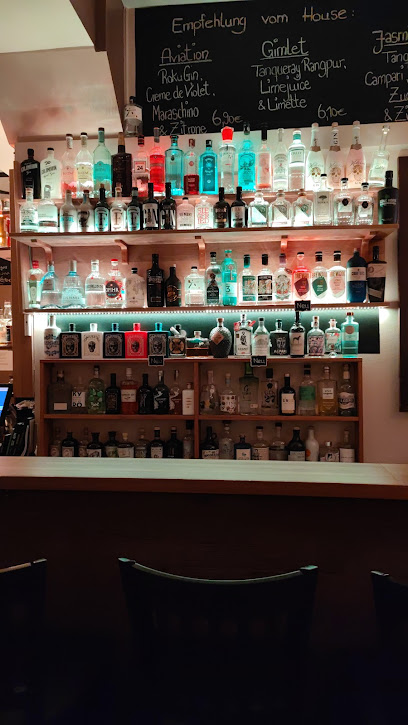
Kronentor: A Baroque Masterpiece
Discover the Kronentor, Dresden's iconic Baroque gateway, a masterpiece of art and history leading to the Zwinger Palace and its treasures.
The Kronentor, or Crown Gate, is the iconic main entrance to Dresden's Zwinger Palace, a stunning example of Baroque architecture. Built in the early 18th century under Augustus the Strong, it showcases intricate sculptures, mythological figures, and a prominent Polish royal crown, symbolizing Augustus's ambition. More than just an entrance, the Kronentor embodies Dresden's rich history and artistic heritage, offering visitors a glimpse into the opulence of the Baroque era. The gate leads to the Zwinger Palace courtyard, surrounded by pavilions and galleries housing world-renowned museums. Open year-round, the Kronentor provides free access to the courtyard, making it a must-see landmark for anyone exploring Dresden's Old Town. Its architectural splendor and historical significance make it a captivating destination for history buffs and casual tourists alike.
A brief summary to Kronentor
- Ostra-Allee 9, Dresden, Altstadt, 01067, DE
- +49351438370312
- Visit website
Local tips
- Visit early in the morning or late in the afternoon to avoid the largest crowds and fully appreciate the architectural details.
- Consider purchasing a combination ticket to access all the museums within the Zwinger Palace for a comprehensive cultural experience.
- Take a guided tour to learn about the history and symbolism behind the Kronentor's sculptures and design.
- Check the Zwinger's event calendar, as the courtyard often hosts concerts and festivals, adding to the atmosphere.
- Don't miss the Glockenspiel Pavilion nearby, featuring Meissen porcelain bells that play melodies throughout the day.
Getting There
-
Walking
From Theaterplatz, with the Semper Opera House behind you, walk directly towards the Zwinger. The Kronentor is the prominent crowned gate directly ahead, serving as the main entrance to the Zwinger courtyard. The walk is short and direct, approximately 2-3 minutes, and offers excellent views of the surrounding architecture.
-
Public Transport
If arriving by tram or bus to Postplatz, walk east towards Theaterplatz (approx. 5-7 minutes). You'll see the Semper Opera House on your left. Continue past the Opera House, and the Kronentor will be directly in front of you, marking the entrance to the Zwinger. A single tram or bus fare within Dresden is approximately €2.50.
-
Taxi/Ride-Share
A taxi or ride-share from Dresden Hauptbahnhof (main train station) to the Kronentor/Zwinger will take approximately 10-15 minutes, depending on traffic. Expect to pay around €10-€15. Ask the driver to drop you off at Theaterplatz for the easiest access.
-
Parking
If driving, several parking garages are located near the Zwinger, including Q-Park Haus Postplatz and Tiefgarage Altmarkt-Galerie Dresden. Parking fees typically range from €2-€3 per hour. From the parking garages, follow signs towards the Zwinger and Theaterplatz. The Kronentor is a short walk from either garage.
Discover more about Kronentor
Iconic landmarks you can’t miss
Postplatz
0.2 km
Discover Postplatz in Dresden: A historic square blending transportation, modern architecture, and access to iconic landmarks like Zwinger Palace and the Frauenkirche.

Dresden Armory
0.3 km
Discover a dazzling collection of ceremonial arms, armor, and Ottoman treasures inside Dresden Castle, revealing centuries of Saxon power and artistry.
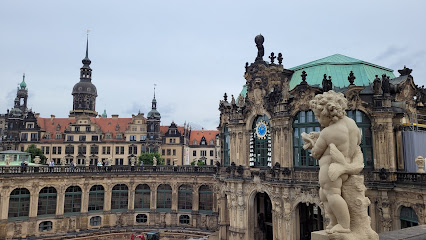
Statue des Hl. Dominikus
0.4 km
Discover the Statue of St. Dominic in Dresden's Stallhof, a serene monument amidst Renaissance splendor, offering a glimpse into the city's rich religious and artistic heritage and historical charm.
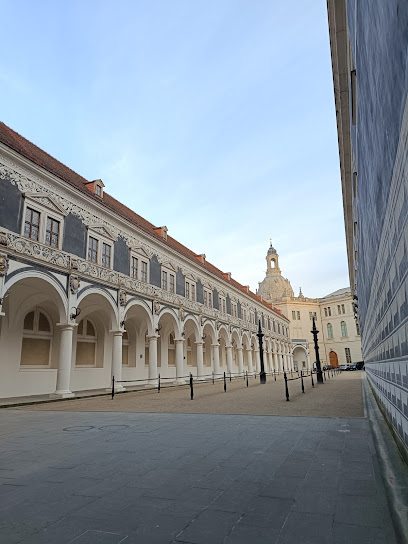
Schloßpl.
0.4 km
Experience Dresden's royal legacy at Schloßplatz, a meticulously restored square surrounded by architectural masterpieces and steeped in Saxon history.
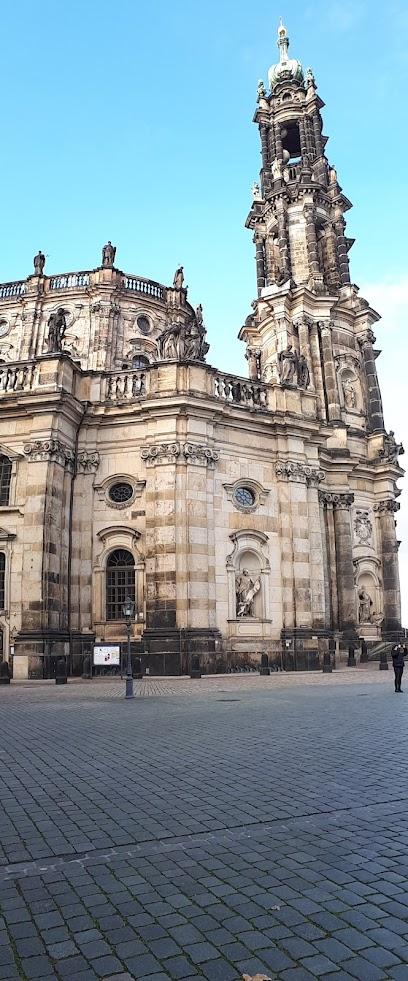
Dinglinger-Haus
0.4 km
Experience the grandeur of Baroque Dresden at the meticulously reconstructed Dinglinger House, a testament to the city's rich history and architectural brilliance, located in the heart of the Neumarkt.
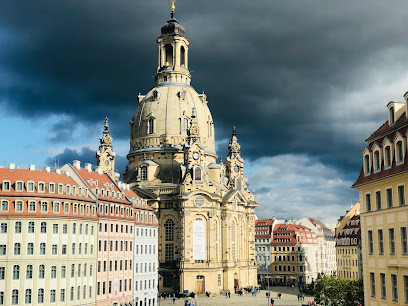
Altmarkt 1
0.5 km
Discover Dresden's historic heart at the Altmarkt, a vibrant square hosting the famous Striezelmarkt and surrounded by cultural landmarks, offering a blend of history and modern-day appeal.
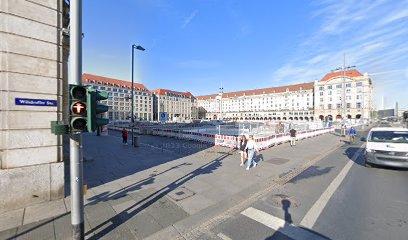
Augustus Bridge
0.5 km
Explore the Augustus Bridge in Dresden, a stunning Baroque architectural marvel connecting the city's historic districts with breathtaking views of the Elbe River.
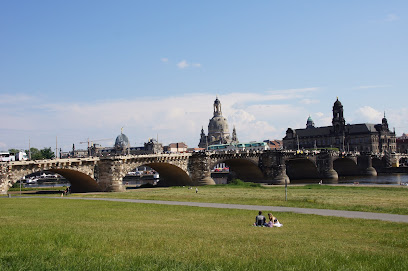
Martin Luther Statue
0.6 km
A towering bronze statue in Dresden's Neumarkt, honoring Martin Luther and the Reformation amidst stunning baroque architecture, symbolizing resilience and historical significance.
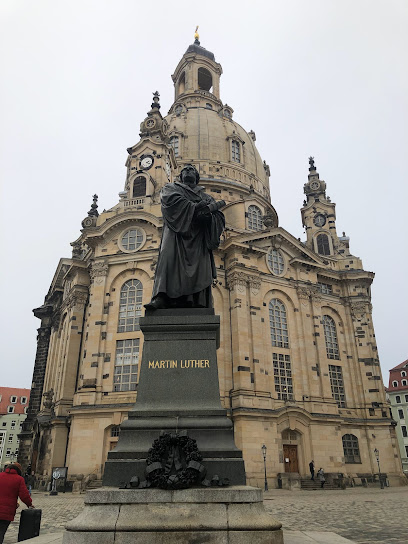
Denkmal „Anna Churfürstin von Sachsen“
0.6 km
Explore the historical significance and exquisite craftsmanship of the Anna Churfürstin von Sachsen monument in Dresden, a must-visit landmark.
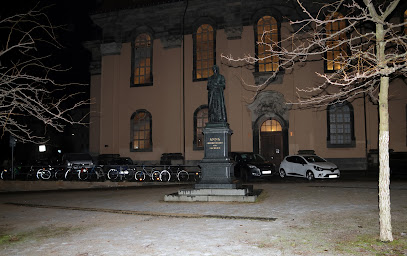
Friedrich August II Koenig Von Sachsen
0.6 km
A regal monument in Dresden's heart, commemorating King Friedrich August II and Saxony's rich history amidst the stunning architecture of the reconstructed Neumarkt.

Frauenkirche Dresden
0.6 km
Experience the stunning beauty and rich history of Frauenkirche Dresden, a symbol of resilience and cultural heritage in the heart of the city.

Dome ascent Frauenkirche Dresden
0.6 km
Ascend Dresden's iconic Frauenkirche dome for breathtaking panoramic views and experience a symbol of resilience, rebirth, and reconciliation in the heart of the city's historic center.
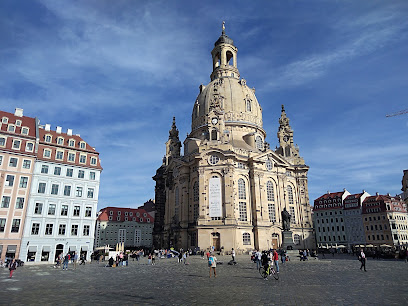
Große Meißner Str. 15
0.7 km
Explore the architectural beauty of Dresden-Neustadt, where history meets modern culture in an unforgettable journey.

Brühl's Terrace
0.7 km
Discover Brühl's Terrace, a breathtaking historical landmark in Dresden, offering stunning views and rich cultural experiences in the heart of the city.
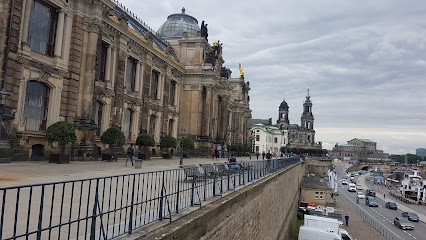
Relikte des Trompeterschlosses
0.7 km
Discover the echoes of Dresden's past at the Relikte des Trompeterschlosses, a subtle yet significant reminder of the city's layered history and architectural evolution in the heart of the Altstadt.

Unmissable attractions to see
Dresden Zwinger
0.1 km
Explore the stunning Baroque architecture and rich art collections at Dresden Zwinger, a must-visit historical landmark in the heart of Dresden.
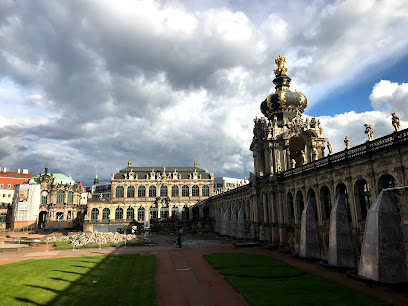
Zwinger
0.1 km
Discover the Baroque splendor and artistic treasures of the Zwinger, a historical landmark and museum in the heart of Dresden.
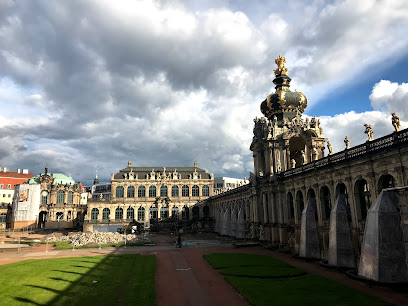
Staatsschauspiel Dresden
0.1 km
Discover the rich cultural heritage of Dresden at Staatsschauspiel, a premier performing arts theater offering diverse and captivating theatrical performances.
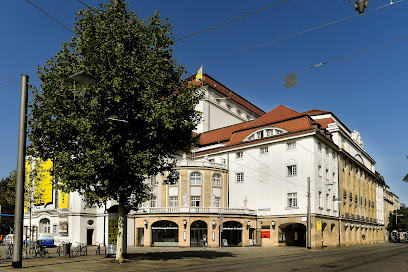
Porzellansammlung
0.1 km
Explore the exquisite porcelain collection at Porzellansammlung, Dresden's renowned museum showcasing art and craftsmanship from centuries past.

SKD | Porcelain Collection
0.1 km
Explore the exquisite SKD Porcelain Collection in Dresden, a museum where history and artistry come together through stunning porcelain treasures.
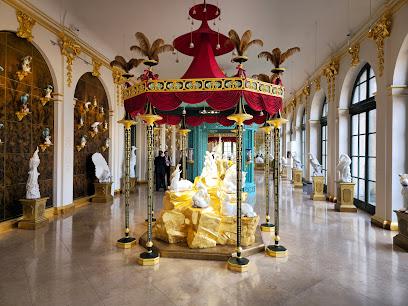
Zwinger Xperience
0.1 km
Experience the opulent Baroque architecture and rich art collections at Zwinger Xperience, a must-visit museum in Dresden.
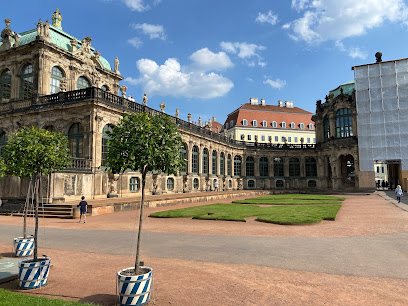
Nymphenbad Dresden
0.1 km
Discover the serene beauty of the Nymphenbad, a baroque fountain in the heart of Dresden’s Zwinger Palace, perfect for relaxation and cultural exploration.
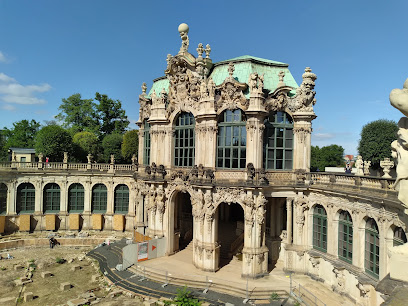
Old Masters Picture Gallery
0.1 km
Explore the Old Masters Picture Gallery in Dresden, a treasure trove of European art featuring masterpieces by Raphael, Rembrandt, and Vermeer.
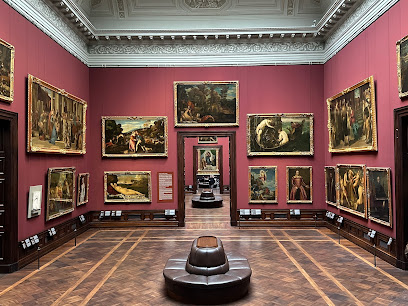
Cholerabrunnen
0.2 km
Explore the enchanting Cholerabrunnen fountain in Dresden's Altstadt, a captivating blend of art, history, and tranquility.
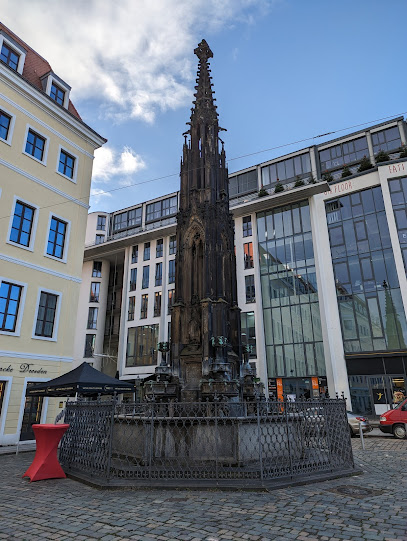
Green Vault
0.2 km
Explore the Green Vault in Dresden, home to stunning art and historical treasures that captivate and inspire every visitor.
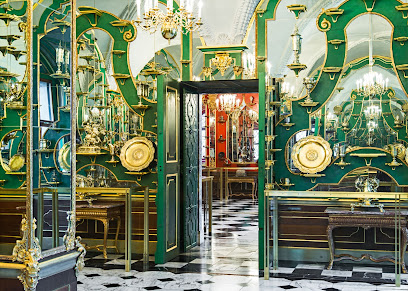
SKD | Green Vault
0.2 km
Explore the opulent treasures of the Green Vault in Dresden, a captivating art museum and historical landmark showcasing exquisite Saxon craftsmanship.
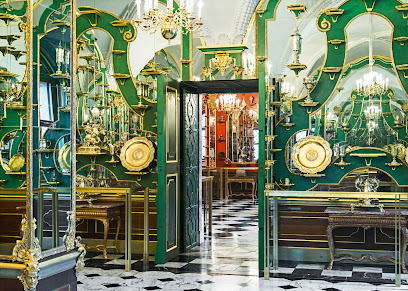
Statue of King Johann
0.2 km
Discover the Statue of King Johann in Dresden, a stunning historical landmark that captures the essence of Saxony's rich heritage and artistic legacy.

Theaterplatz Dresden
0.2 km
Explore Theaterplatz, Dresden's historic square surrounded by stunning architecture and vibrant cultural experiences.
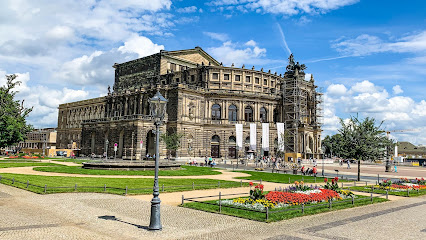
SKD | Turks/Osmanic Chamber
0.2 km
Explore the SKD | Turks/Osmanic Chamber in Dresden, a captivating museum showcasing the rich heritage of the Ottoman Empire through stunning artifacts and art.
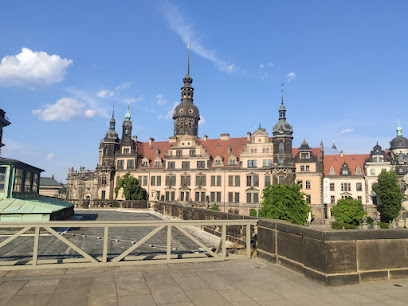
SKD | Staatliche Kunstsammlungen Dresden
0.3 km
Explore the rich artistic heritage of Staatliche Kunstsammlungen Dresden, a cultural gem in the heart of Germany's historic city.
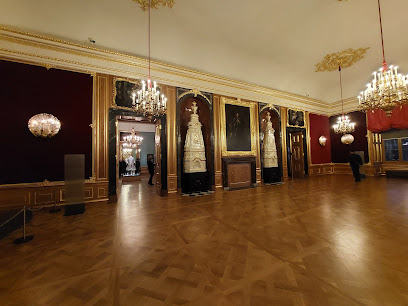
Essential places to dine
Alte Meister Café & Restaurant
0.1 km
Experience exquisite dining at Alte Meister Café & Restaurant in Dresden - where tradition meets contemporary culinary art.

Sophienkeller im Taschenbergpalais
0.2 km
Experience exquisite Saxon cuisine in an elegant setting at Sophienkeller im Taschenbergpalais in Dresden.
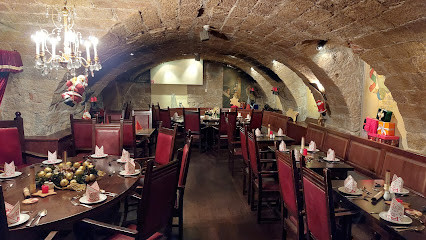
Felix Restaurant
0.2 km
Experience exquisite modern European cuisine at Felix Restaurant in Dresden's Altstadt - where flavor meets elegance.

Kastenmeiers
0.2 km
Experience the finest seafood and sushi at Kastenmeiers, Dresden's top-rated fine dining destination nestled in the heart of Altstadt.
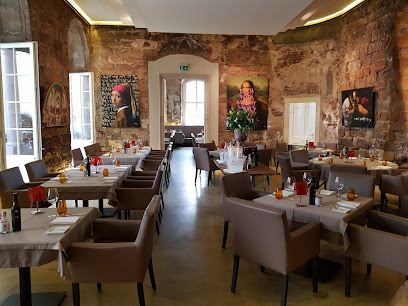
Paulaner´s im Taschenbergpalais
0.3 km
Discover authentic German cuisine at Paulaner’s im Taschenbergpalais in Dresden's historic Altstadt - where tradition meets elegance.
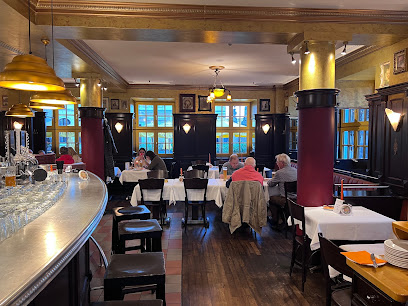
Restaurant Wohnstube
0.3 km
Experience the fusion of local flavors and modern cuisine at Restaurant Wohnstube in Dresden.
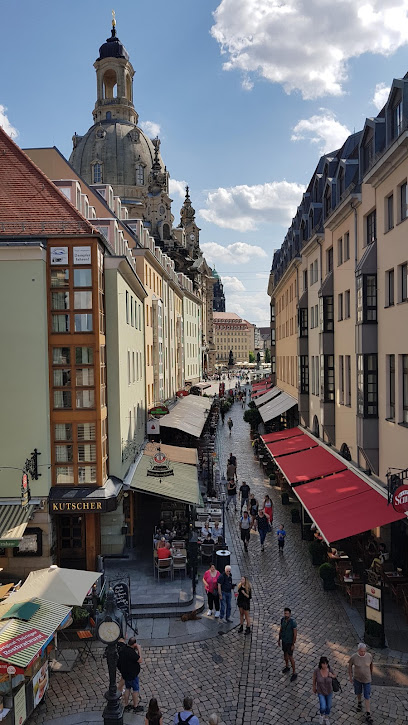
Restaurant Platzhirsch am Schlosseck
0.3 km
Experience authentic German cuisine in the heart of Dresden at Restaurant Platzhirsch am Schlosseck - where tradition meets modernity.
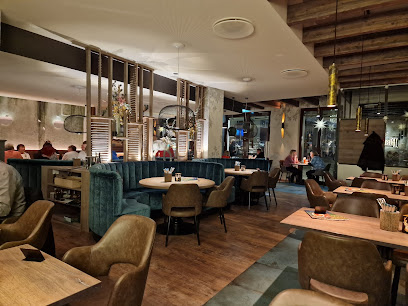
Kahnaletto
0.4 km
Dine on a charming theater barge at Kahnaletto - where authentic Italian cuisine meets breathtaking views along the Elbe River.
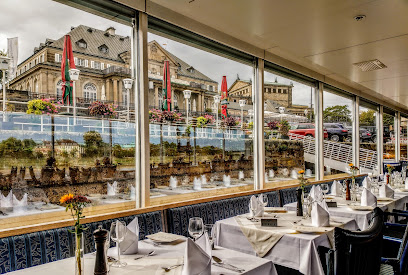
HANS IM GLÜCK - DRESDEN Altmarkt
0.4 km
Discover gourmet burgers at HANS IM GLÜCK - DRESDEN Altmarkt; where taste meets style in the heart of Dresden.
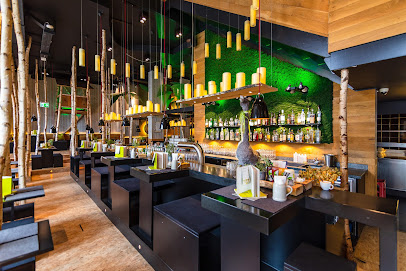
Wilma Wunder Dresden
0.4 km
Experience authentic German cuisine at Wilma Wunder in Dresden – where tradition meets modern culinary artistry.

Restaurant finesse
0.5 km
Experience authentic German cuisine at Restaurant Finesse in Dresden's historic Altstadt - a culinary delight awaits you.
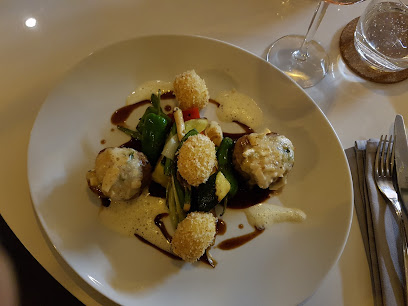
Restaurant brennNessel Dresden
0.5 km
Experience innovative vegetarian cuisine at Restaurant brennNessel in Dresden's historic Altstadt – where every meal is a celebration of flavor.
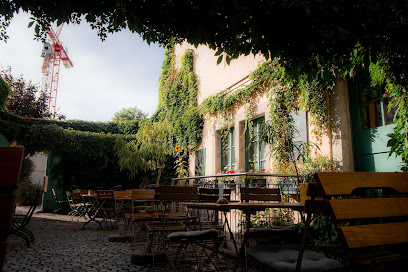
Aposto Dresden
0.5 km
Experience authentic Italian cuisine at Aposto Dresden—where delicious flavors meet warm hospitality in a charming atmosphere.
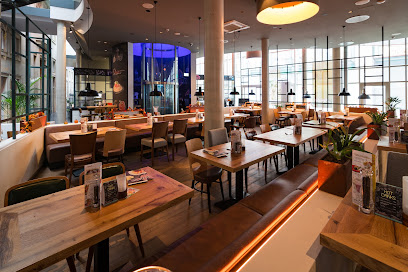
Hickory Dresden – Tapas BBQ & Smokehouse
0.6 km
Discover Hickory Dresden: Where American BBQ Meets Asian Fusion for an Unforgettable Dining Experience.
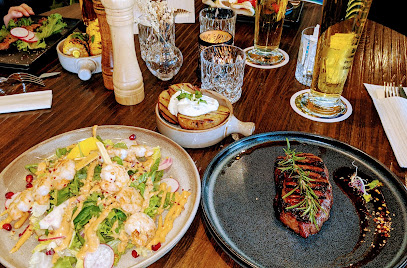
L'Osteria
0.6 km
Experience authentic Italian cuisine at L'Osteria in Dresden's Altstadt—delicious pizzas and warm hospitality await.
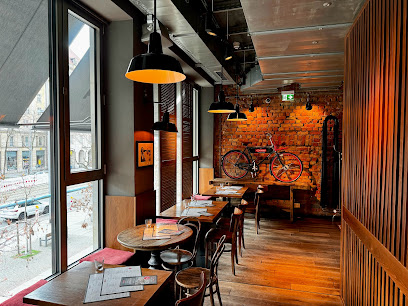
Markets, malls and hidden boutiques
Flying Tiger Copenhagen
0.3 km
Explore the delightful and affordable gift options at Flying Tiger Copenhagen in Dresden, a whimsical shopping destination for unique finds.
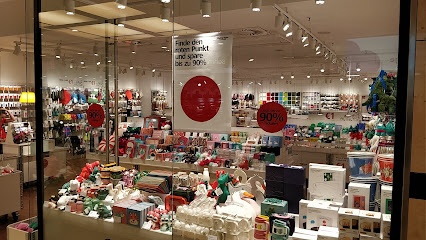
Hollister Co.
0.3 km
Explore the laid-back California style at Hollister Co. in Dresden, your ultimate destination for trendy fashion and accessories.
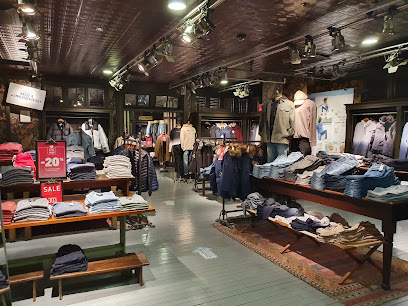
LA DONNA Exklusive Damenmode Dresden
0.3 km
Discover exclusive women's fashion at LA DONNA in Dresden, where style and elegance converge for an unforgettable shopping experience.
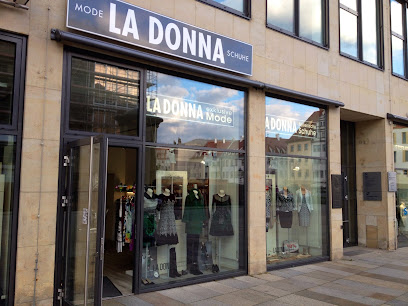
Lindt Boutique Dresden
0.3 km
Experience the exquisite world of chocolate at Lindt Boutique Dresden, where every bite is a moment of pure indulgence.
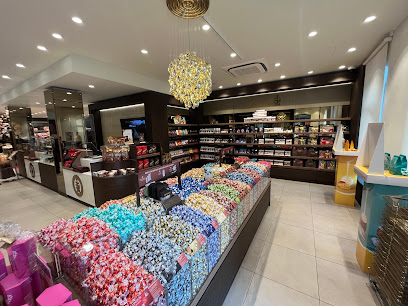
Silbermann Fashion GmbH
0.3 km
Discover exquisite clothing and custom tailoring at Silbermann Fashion in Dresden, where style meets craftsmanship for men and women.
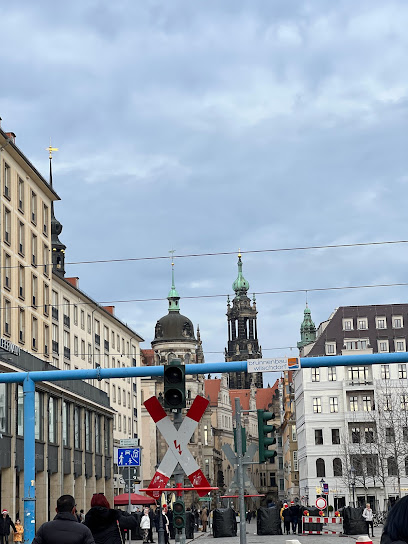
ONLY
0.4 km
Explore the latest women's fashion at ONLY in Dresden, where style meets comfort in a chic shopping environment.
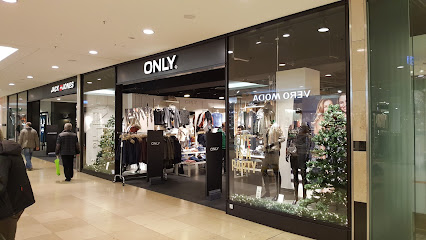
camel active Store Dresden
0.4 km
Explore stylish and durable casual clothing at the Camel Active Store in Dresden's enchanting Altstadt, perfect for fashion enthusiasts and tourists alike.
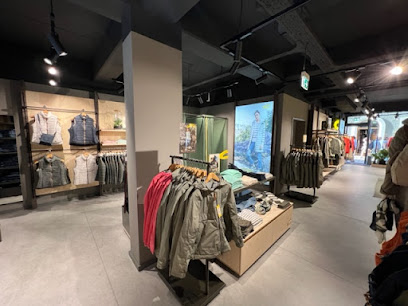
BOSS Store Dresden
0.4 km
Discover contemporary elegance and style at BOSS Store Dresden, a premier shopping destination for fashion enthusiasts.
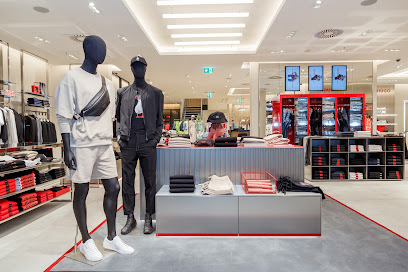
Flying Tiger
0.4 km
Discover a treasure trove of quirky souvenirs and delightful finds at Flying Tiger in the heart of Dresden's Altstadt.

Stefanel
0.4 km
Explore the elegance of women's fashion at Stefanel Boutique, a stylish stop in Dresden's historic Altstadt.
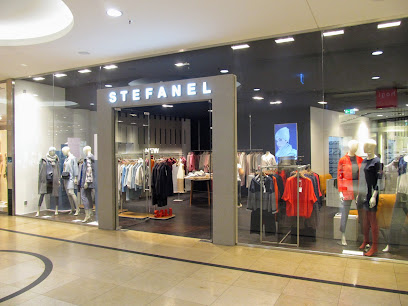
Kunsthandwerk in der Altmarkt-Galerie
0.4 km
Discover unique handcrafted gifts and souvenirs at Kunsthandwerk in der Altmarkt-Galerie, a treasure trove of local artistry in Dresden.

MUDDASTADT
0.4 km
Discover unique gifts and local crafts at MUDDASTADT, the ultimate souvenir shop in Dresden's historic Altstadt.
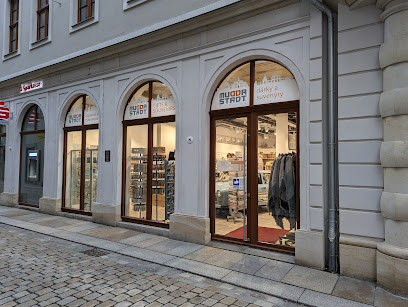
Dresden Souvenirs
0.4 km
Discover unique souvenirs that capture the essence of Dresden's rich culture and history at Dresden Souvenirs, a must-visit gift shop in the heart of the city.
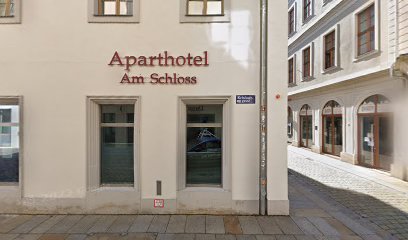
Altmarkt-Galerie Dresden
0.4 km
Experience shopping, dining, and entertainment at the Altmarkt-Galerie Dresden, a central hub for visitors seeking the best of the city.
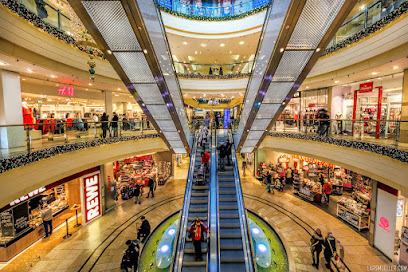
Blue Tomato Shop Dresden
0.4 km
Explore Blue Tomato Shop in Dresden for the latest in sportswear, skateboards, and snowboards, all in a stylish urban setting.
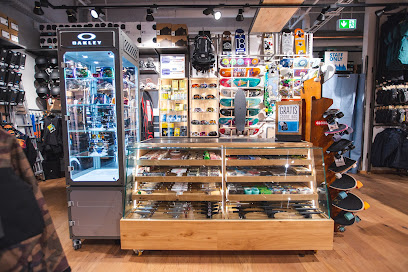
Essential bars & hidden hideouts
Bar 1705 - Dresden
0.2 km
Experience unparalleled luxury at Bar 1705 in Dresden, where exquisite cocktails and a chic ambiance await you.
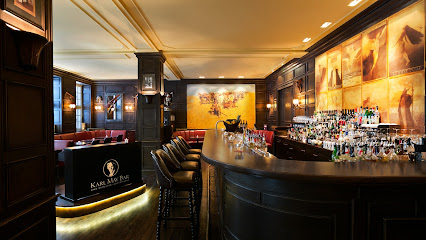
AMARO Bar - Dresden
0.3 km
Experience the vibrant nightlife of Dresden at AMARO Bar, where expertly crafted cocktails meet a cozy and inviting atmosphere.
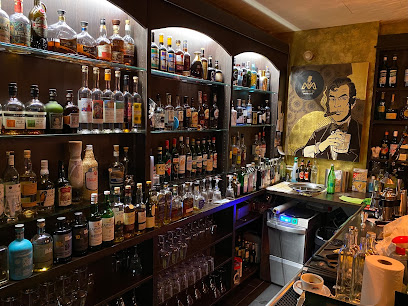
Shamrock Irish Bar & Restaurant
0.3 km
Discover Shamrock Irish Bar & Restaurant - an authentic Irish pub in the heart of Dresden, offering delightful cuisine and a lively atmosphere.
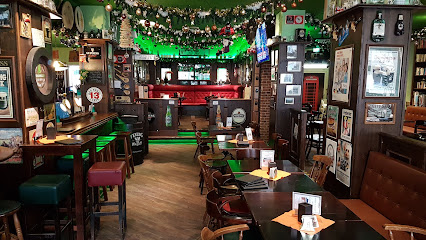
Schlossbar
0.3 km
Experience the elegance of Schlossbar in Dresden with exquisite drinks and a sophisticated atmosphere, perfect for unwinding after a day of exploration.
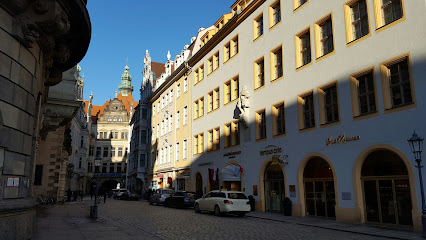
Roof-Top Bar im Vienna house
0.5 km
Discover the Roof-Top Bar in Vienna House: Where breathtaking views meet exquisite drinks in the heart of Dresden's vibrant nightlife.
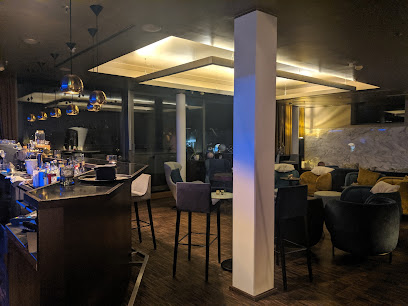
Cocktailbar Pervak
0.5 km
Experience the vibrant and innovative cocktail culture at Cocktailbar Pervak in the heart of Dresden's Altstadt, where every drink tells a story.
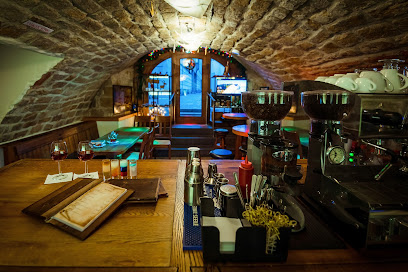
Pianobar
0.5 km
Discover the enchanting Pianobar in Dresden, where live music and exquisite cocktails create an unforgettable nightlife experience.
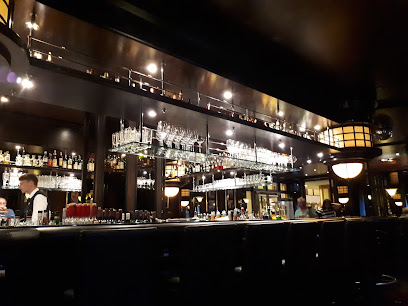
Champagner Lounge
0.6 km
Experience the elegance of Champagner Lounge in Dresden, where a remarkable champagne selection meets a vibrant nightlife atmosphere.
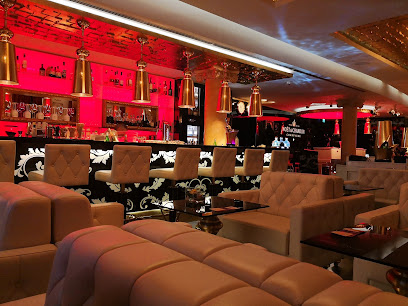
Volt Bar
0.6 km
Discover the lively Volt Bar in Dresden, blending exquisite drinks with a vibrant atmosphere for an unforgettable night out.
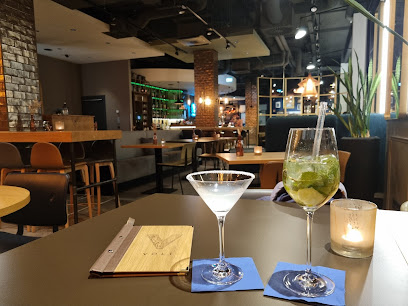
Gin House Dresden
0.7 km
Discover the vibrant Gin House Dresden, where exceptional cocktails and a lively atmosphere await in the heart of the city!
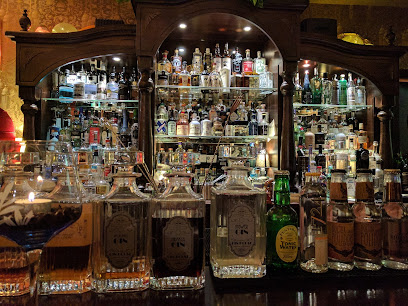
Twist Bar
0.7 km
Experience the vibrant nightlife of Dresden at Twist Bar, where creative cocktails and a chic atmosphere await every visitor.

The Red Rooster - Dresden
0.9 km
Discover The Red Rooster in Dresden - a lively pub offering delicious food, a wide array of drinks, and a vibrant atmosphere perfect for socializing.
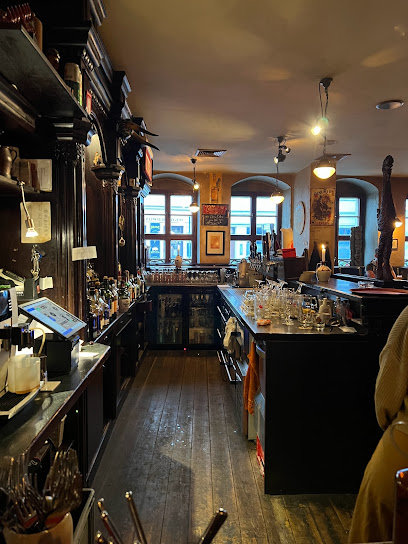
HERZ american bar - Dresden
1.1 km
Immerse yourself in the lively ambiance of HERZ American Bar in Dresden, serving exquisite cocktails and a taste of American bar culture.
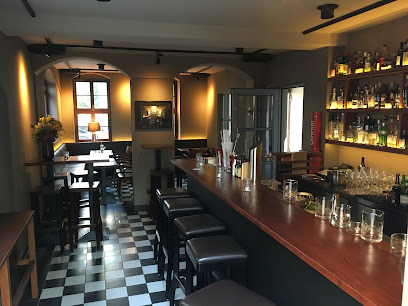
BBC – Bar Brasserie Cassis - Dresden
1.8 km
Discover the vibrant energy of BBC – Bar Brasserie Cassis, a top destination for drinks and light bites in Dresden's lively Neustadt district.
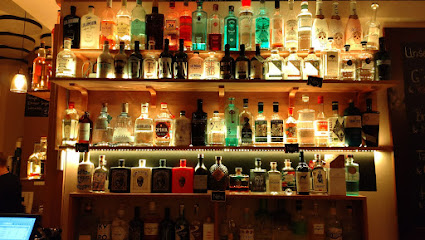
BBC Whisky & Gin House
1.8 km
Discover a refined selection of whiskies and gins in the heart of Dresden-Neustadt at BBC Whisky & Gin House, a premier bar for spirit enthusiasts.
